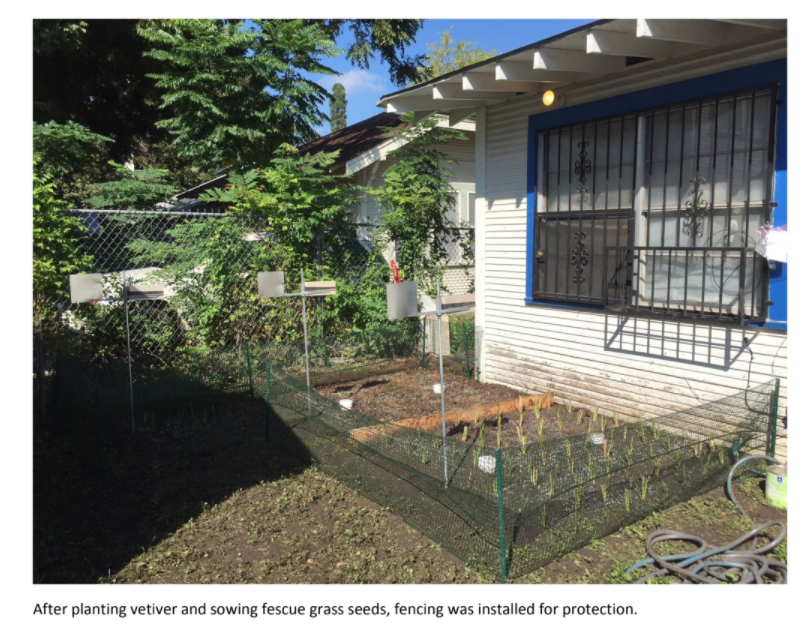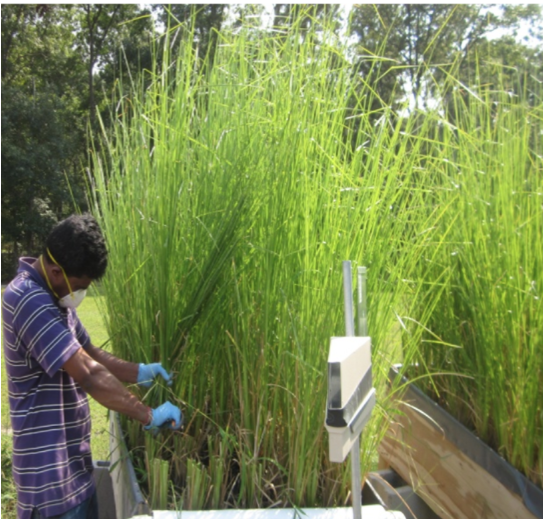Despite efforts to reduce lead exposure, there are still many house/housing facilities that contain lead-based paint. Children pose the most significant risk to lead dust and lead soil exposure. Cleaning up the lead in your house can be expensive. Lead abatement is designed to remove lead-based paint hazards (the United States Environmental Protection Agency). The estimated expense for lead abatement is between $10,000 and $30,000. Due to high mobility and accumulation rates, exposure to lead from the soil is a significant concern (Datta. 2018).
Soil lead removal can be physically done by removing the contaminated soiling for off-site disposal. This method can be expensive and difficult in residential areas with proximity. Other methods include biological and chemical remediation. Chemical methods of lead removal include adding phosphorus/fertilizers, natural minerals, and lime to bind to lead in the soil to stop leaching effects. A disadvantage to this method is that it has limited solubility for lead in soil. There is limited data that lead solubilized by chemicals can also be solubilized in the human gastrointestinal system (Andra et al. 2010).
Phytoremediation is another popular method that uses plants to treat, remove, degrade, and stabilize pollutants such as lead from the soil (Merriam-Webster). This method is environmentally friendly, inexpensive, and can be done in residential areas. Effective phytoremediation depends on factors such as soil chemistry, soil watering holding capacity, lead concentrations, plant species, and lead bioavailability (Andra et al. 2010).


Vetiver grass (Vetiveria zizanioides) is a fast-growing perennial grass able to survive in temperate, tropical, and extreme climates. Vetiver grass is known for its massive and complex root system (3-4 m) (Andra et al. 2010, Truong et al.2010). For that reason, vetiver grass is commonly used in erosion control, remediation, land restoration, and stabilization. Plants require essential metals such as zinc, copper, and iron, which play a role in metabolism, proteins, and hormone function. In contrast, nonessential metals are highly toxic to plants such as lead. Some plants such as Vetiver grass have shown in multiple studies to have a high tolerance, and hyper accumulate heavy metals such as arsenic, cadmium, copper, chromium, nickel, and lead (Banerjee et al. 2016). Hyperaccumulators are plants that can tolerate high levels of certain metals and accumulate them into the above-ground parts of the plant (Datta et al. 2013) .
Vetivers can accumulate heavy metals in the root system by releasing organic compounds to mobilize metals. Mobilization of metals is dependent on factors such as the pH of the soil. At a lower acidic pH, metals are more mobilized than in higher basic pH. The organic compounds released by the roots change the pH of the rhizosphere, which mobilize metals and are then uptaken by the plant roots. The rhizosphere is a region of the soil by the plant roots in which the soil chemistry and soil bacteria influence the plant growth, nutrient exchange, and respiration of the plant (Oxford Languages). Vetiver grass can tolerate metal toxicity by minimizing translocation from the roots to the shoots, releasing antioxidant enzymes and genetics (Rascio et al. 2011).

Fescue grass (Festuca arundinacea) is a fast-growing grass species with large biomass. Fescue grass has been demonstrated to accumulate moderate levels of heavy metals such as lead, copper, and zinc and has shown limited effects on biomass. Overall when compared to vetiver grass, fescue grass does not perform as well (Steliga et al. 2020)
Andra, S., D. Sarkar, R. Datta, and S. Saminathan.2010. Chelant-assisted phytostabilization of paint contaminated residential sites. Clean soil air water. 38(9), 803-811
Truong, P.N., Foong, Y.K., Guthrie, M., Hung, Y.T., 2010. Phytoremediation of heavy
metal contaminated soils and water using vetiver grass. In: Wang, L.K., Tay, J.-H.,
Tay, S.T.L., Hung, Y.-T. (Eds.), Environmental Bioengineering. Humana Press.
Steliga, T. and Kluk, D. 2020. Application of Festuca arundinacea in phytoremediation of soils contaminated with Pb, Ni, Cd, and petroleum hydrocarbons. Ecotoxicology and Environmental Safety. 194
Datta, R., E. Geiger, and D. Sarkar. 2013. Lead and Phytoremediation. Springer.
United States Environmental Protection Agency. Lead Renovation, Repair and Painting Program. https://www.epa.gov/lead/lead-renovation-repair-and-painting-program
Merriam-Webster. Phytoremediation. https://www.merriam-webster.com/dictionary/phytoremediation
Banerjee, R., P. Goswami, K. Pathak, and A. Makherjee. 2016. Vetiver grass: An environmental clean up tool for heavy metal contaminated iron ore mine soil. Ecological Engineering. 90: 234.https://www.sciencedirect.com/science/article/pii/S0925857416300271?casa_token=65VC9V9smEQAAAAA:vXDQxvJeMLA9swmC5btFgmVrGd7l1cBjQvL6gw55DvyGDRHFyByB7XwvO6k2ynKgkGJGUrA
Rascio, N. and F. Navari-Izzo. 2011. Heavy metal hyperaccumulating plants: How and why do they do it? And what makes them so interesting?. Plant Science. 180: 169-181
Oxford Languages. Rhizosphere. https://languages.oup.com/google-dictionary-en/